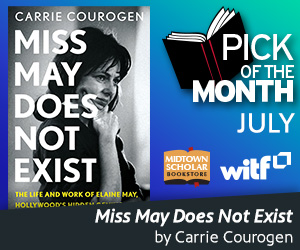York poet laureate: Smack in the middle of an arts movement

People mix and mingle during The Parliament’s Spring Forward event in The Bond Building, which will become a wedding and events venue, on Friday, April 18, 2014. The Parliament hosted Spring Forward: Fashion Meets Art, an event featuring collaboration between local artists and fashion boutiques and culminating in a runway presentation, on Friday, April 18, 2014, at The Bond Building on East King Street in York. Chris Dunn — Daily Record/Sunday News
Every good writer starts their story in medias res, a Latin phrase that means smack in the middle of things. While I might follow this advice when I am writing a story, truth is I am always curious about beginnings.
Right now I find myself smack in the middle of an arts movement, a sort of renaissance that began in York long before I became poet laureate. Just ask Carol Clark Williams about the beginning of that story and this is what she will tell you:
Twenty-three years ago Williams emerged from a life centered around work and raising her two boys to become a part of an art scene that was both new and exciting. Back then the poetry community was made up of a handful of artists like Reni Fulton, John Terlazzo, Keith Baughman, Jack Veasey, Ed Starkey, Anna Bowman.
There was also YorkArts and the YorkFest Literary Competition where Williams entered her poetry for the first time and managed to win an honorable mention. That was how Williams met Anna Bowman and the two of them, along with Reni Fulton and Ed Starkey founded Yorkpoets.
In the beginning, Yorkpoets was a unified, dues paying organization that rented space from YorkArts. Later, as the preferences of individual poets evolved, Yorkpoets split into smaller groups that included critiquing, workshopping, public readings, and playwrighting.
Much like the disciples of any movement, poets know exactly what to do when a scattering takes place. Before long there were literary groups established in York, Harrisburg, Hanover, Lancaster, and Reading, with Williams and other local poets collaborating and supporting one another’s venues.
The literary arts scene was growing.
Not only was Williams there to witness the beginning of York’s art renaissance, but in 2007 Carol Clark Williams played an integral role in continuing to bring poetry to the forefront when she was appointed the third — and first female — Poet Laureate of York.
Williams’s vision as an ambassador of the arts was to teach poetry to anyone who was willing to write with her. Especially high school students who could use the art form as therapy. Williams dreamed of making poetry accessible to as many people as possible. One way she chose to accomplish this was by taking over the YorkFest Poetry Spoken Here tent.
The YorkFest poetry tent had been Reni Fulton’s idea. Fulton supplied the tent and Carol Clark Williams helped in any way she could. They put up poster boards for passersby to record a community poem. They invited local poets to perform and share their poetry.
The poetry tent started out near the colonial courthouse. Then it moved to the courthouse steps. Then across Market Street. Then it moved to the rail trail creek path not far from King Street. And each year the poetry tent grew to amazing proportions featuring poets from Ohio to Connecticut to Annapolis.
This year when the tents were recently assigned their locations for YorkFest 2015, the poetry tent was back where it all began, on the corner of Market Street and Pershing near the colonial courthouse. Except this time, the first time since 2007, Williams will not be the one running the poetry tent. Instead Carol Clark William will finish out the two days of jam-packed readings as this year’s highlighted poet. But this, too, is in medias res.
Carol Clark Williams, the poet, has her own beginning.
As a child, Williams was always sketching and making up verses to go along with the pictures. Both her mother and father wrote poetry and as soon as Williams learned to create words she began to write poetry too.
In high school an English teacher submitted one of Williams’s poems for publication in an anthology without Williams’s knowledge and the poem was published. After that initial experience of seeing her work in print, Williams began to win awards and have her poems accepted for publication. Though this was validating if she had never published a poem, had never joined the art scene, had never become poet laureate, Carol Clark Williams would still be “compulsively writing.”
Williams has never worried about whether or not she was labeled a poet or writer. All she knew was that she wanted to write. “I loved poetic forms,” she says. “I loved the rules and complexity and the wonderful feeling of accomplishment when a poem turned out right.”
Williams’s desire is for everyone to know that feeling of deep satisfaction. It’s her hope that people will be encouraged to find an art form that inspires creativity and joy. What Williams found that day twenty-three years ago when she surfaced from the all-consuming tasks of working a 9 to 5 and taking care of a family was that art, in particular shared art brings “a sense of community that instigates precious friendships,” a real sense of connection.
Besides her own transformation, Carol Clark Williams has witnessed and helped usher in the metamorphosis of a city.
She says, “whether it’s the tinker, the cat, rooster and dragon, the embellished trash cans, the gorgeously painted parking meters, chalkwalks, storefront windows, the Wayne White Exhibit, or Spaceship York, these concepts give us permission to experiment and create with freedom and fun.”
When asked about the future, Williams knows exactly what she would like to see next in York. She is eager for “a Writer’s House, like the writer’s house at Franklin and Marshall.”
In terms of her own future in poetry Williams says, “I want to be more minimal in my poetry. Uncluttered. I want to find the one word that says it all.”
Poetry is one of the ways Williams identifies herself. She also calls herself seeker, mother, Christian, poet. I would also call her pioneer. Carol Clark Williams helped York’s art scene become what it is today. Yes, she is poet and pioneer, there since this story’s beginning.
Upcoming events
YorkFest 2015 will take place Saturday Aug. 29 and Sunday Aug. 30 in historic downtown York. The Poetry Spoken Here poetry tent will be located at the corner of Market Street and Pershing Avenue.
To hear Carol Clark Williams and other local poets read from their work come out to the YorkFest opening reception held at the Agricultural and Industrial Museum on Friday Aug. 28 from 6-8 p.m. The museum is located at 217 West Princess St.
Carol Clark Williams will also be facilitating a women’s writing workshop “How to Craft a Sonnet” on Monday Aug. 24 from 5-7 p.m. The workshop will take place at Community Progress Council, 226 East College Ave.
Submit short stories, essays, memoir, novel excerpts, poems, and any accompanying artwork to The Writers Voice at poetgirlpoet@yahoo.com.
Poems by Carol Clark Williams
The Wolf Takes Columbine
Pure flame, soaring and searing along nerve endings,
the seductive simple thought:
I can —
flaring red banner flapping in high winds of
furious noisy wheeling whirling brainstorm
and then
transformation, O sweet agony,
hideous dark delight:
grin stretching back to grimace, switchblade slide
of drooling chops, that awful, delicious itch
between shoulderblades and fingers
arching to talons, the sprout of
thick coarse hairy hide hide hide,
coat that cloaks like armor
and heart — jumping beating beating triphammer heart
that would take a silver bullet to stop it,
stop it, stop it, stop to stop
the swipe, the swathe, the spreading spattered path
unrolling ahead through a throbbing red haze
of vision of vengeance of exultant, endless power.
— Previously published in Shirazad and Fledgling Rag
Getting Along
In Pennsylvania soft morning sunlight
settles like peace on our old row houses.
Each day of the week includes its duty:
Friday’s routine, sweep porch and pavement.
In L.A. death surges and screams in the streets;
helicopters record the horror below,
fists against faces, blood on the asphalt,
dead counted by dozens, like eggs in cartons.
In Pennsylvania I sweep the sidewalk,
swinging the broom at maple seed, blossoms
scattered uncountable, green and fragile,
half-buried in black mud glued to the asphalt.
Each hour in L.A. the death count rises:
Rodney King pleads for the old, for the young.
I swing the broom like a metronome, pendulum,
restoring what order I can.
Shadow of a Doubt
Like Lot’s wife
I turn my face
toward what has passed
choose memory
and mourning,
extend my hand
to one who is
already gone
under the shadows
and I am nameless,
reduced to smallest substance,
not even flowing water
but standing salt.
Behind me walls collapse
the cities burn and fall
and those who can
scream their grief aloud
repent and plead
while I am silent
of interest to only
wild deer and cattle.
I sift through crystals
loose as ashes, disconnected,
drying and melting
making barren
the very ground
I stand upon.
More…
York’s poet laureate takes a monthly look at local writers
York poet laureate: A love story of grief
The Writer’s Voice: Poems for the readers who need them most
This article comes to us through a partnership between York Daily Record and WITF.


